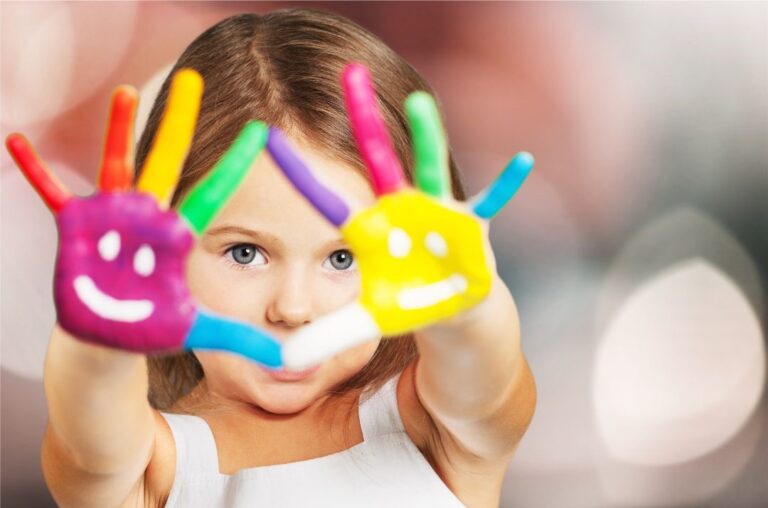How to Help an Autistic Child with Transitions Between Activities

In this post we’ll explore why transitions are so hard and the best strategies to help an autistic child with transitions from one activity to another, leave a favorite place or change environments.
This post may contain affiliate links and I could earn a small commission at no cost to you. However, I will never recommend anything that I do not believe in or use myself. You can read more about my disclosure policy here.
Imagine being in the middle of a task, fully focused, when someone pulls you away with no warning. Frustrating, right? Now imagine that feeling magnified by sensory sensitivities, communication struggles, and the comfort of routine being disrupted. This is often what it feels like for an autistic child during transitions.
According to research, as many as 85% of autistic children struggle with these transitions between activities or environments. It’s more than a simple dislike for change. For them, moving from one task to another can feel like being thrown into chaos.
If you’re a parent, teacher, or caregiver, helping an autistic child through these moments is crucial—and entirely possible with the right strategies. Let’s explore why transitions are so hard and how you can make transitions smoother for your autistic child (and you!).
Related: 25 Ways Life Looks Different Parenting an Autistic Child
Understanding Challenges with Transitions for an Autistic Child
Transitions can be overwhelming for autistic children due to several factors:
Sensory Overload
Autistic children may experience sensory overload due to sensory processing disorder or sensory challenges, where their senses are hyper-reactive to stimuli. Changes in environment, noise levels, lighting, or temperature can be overwhelming and distressing.
For example, transitioning from a quiet classroom to a noisy cafeteria can be incredibly challenging for a child who struggles with auditory sensitivity.
Understanding and addressing these sensory challenges is essential for creating smoother transitions.
Difficulty with Change
Autistic children often find comfort and security in routines and predictability. Any deviation from their established patterns can cause anxiety and confusion.
Imagine suddenly changing the route home from school without warning. This disruption can lead to meltdowns or resistance.
Providing structure and predictability through consistent routines helps alleviate anxiety and supports smoother transitions.
Communication and Social Challenges
Many autistic children struggle with communication and social skills. Expressive and receptive language difficulties can make it hard for them to understand or express their feelings and concerns during transitions.
For example, a child may become overwhelmed during a transition, but lack the verbal skills to communicate what’s wrong. This can lead to frustration and meltdowns.
Supporting communication through visual aids, simple language, and patience is crucial for helping them navigate transitions more smoothly.
Related: How to Calm Autistic Meltdowns: 7 Tips that Work
Executive Functioning Issues
Autistic individuals often have challenges with executive functioning, which includes organizational and planning skills. Planning and executing the steps involved in transitioning from one activity or place to another can be particularly difficult.
For example, a child may struggle to pack up their belongings at the end of the school day or to switch from one subject to another.
Breaking down transitions into smaller, manageable steps and providing visual supports can assist in overcoming these executive function challenges.
Related: 10 Of The Best Children’s Books About Autism

9 Strategies to Help an Autistic Child Transition Between Activities
1. Establish Predictable Routines
Consistency and predictability are vital for autistic children. Establishing routines provides a sense of security and helps them understand what to expect.
Creating visual schedules, using timers, and giving advance notice about upcoming changes can help prepare them mentally.
For example, you might use first-then statements such as, “First snack time, then it’s playtime.”
2. Visual Supports
Visual aids are incredibly helpful for autistic children in understanding and following the steps involved in a transition.
Visual schedules (this visual schedule is my absolute favorite!) or checklists serve as concrete references, reducing anxiety and uncertainty.
They provide a clear outline of what will happen next, helping the child feel more prepared and in control.
3. Prepare for Change
Transitioning is easier when the child knows it’s coming. When a transition is about to occur, give plenty of warnings and reminders using visual or verbal cues.
You might say, “In 10 minutes, we’ll finish playing and move to the next activity.” This helps the child mentally prepare for the shift, minimizing surprise and anxiety.
4. Use Transition Objects
Transition objects, like a sensory toy or a comfort item, can provide a sense of security during changes.
Allowing the child to hold or keep these objects during transitions can offer comfort and a sense of familiarity, making the transition smoother and less stressful.
Related: Ultimate Toy Guide: 30 Best Sensory Toys for Autistic Children
5. Offer Choices and Control
Providing choices within the transition empowers the child and reduces anxiety.
For instance, you can ask, “Do you want to walk or hop to the car?” or “Would you like to wear your red shoes or blue shoes?”
This gives the child a sense of control over the situation, making transitions more manageable.
6. Break Down Transitions
Complex transitions can be overwhelming. Breaking them into smaller, manageable steps helps the child understand the process and reduces the feeling of being overwhelmed.
Offer praise and rewards for successfully completing each step, reinforcing positive behavior and building confidence.
7. Visual Countdowns
Use visual countdowns, such as timers or visual cues, to signal the remaining time for an activity or to indicate when a transition will occur.
This method assists the child in understanding the concept of time and mentally preparing for the change.
Using these tools to signal remaining time for an activity or to indicate when a transition will occur gives the child a tangible way to track the passage of time.
8. Social Stories
Social stories are visual narratives that depict a specific situation or transition in a simplified and structured manner.
They help autistic children understand what will happen during the transition and what is expected of them.
Reading or reviewing social stories before transitions can ease anxiety and uncertainty.
9. Support Communication
Encourage the use of alternative communication methods, such as picture exchange systems or augmentative and alternative communication (AAC) devices, to help the child express their needs, concerns, or emotions during transitions.
Providing effective communication tools ensures the child feels understood and supported during transitions, reducing frustration and anxiety.

Final Thoughts
Supporting a young autistic child during transitions is vital for their overall well-being and minimizing meltdowns.
By understanding the challenges they face and implementing strategies that provide predictability, visual supports, and opportunities for choice and control, we can help them navigate transitions more smoothly.
Remember, each child is unique, so it’s essential to observe their individual needs and preferences and tailor the strategies accordingly.
With patience, empathy, and consistent support, we can empower these children to thrive and successfully transition from one activity or environment to another.
Recommended
- How to Calm Autistic Meltdowns: 7 Tips that Work
- 25 Ways Life Looks Different Parenting an Autistic Child
- Positive Affirmations For Autistic Children You Need To Know
- Ultimate Toy Guide: 30 Best Sensory Toys for Autistic Children






